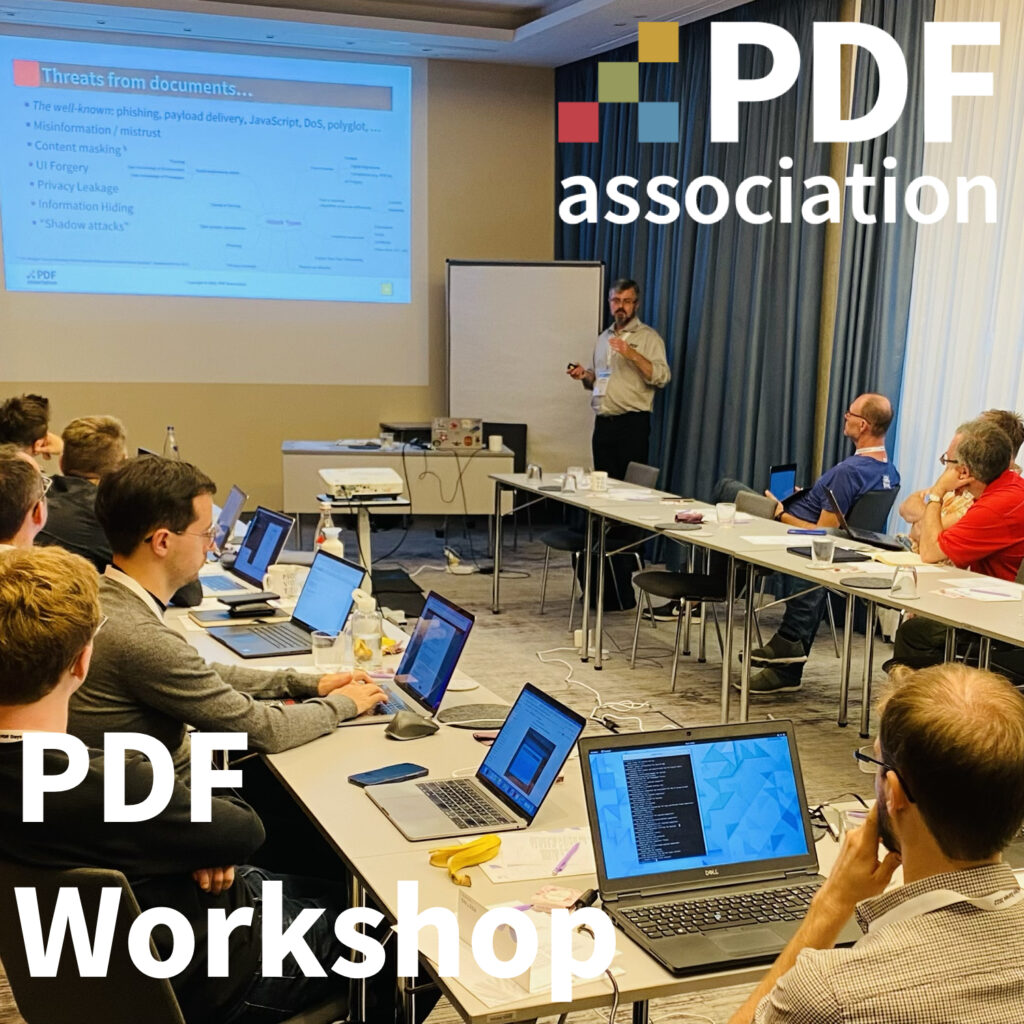PDF Days Europe Tickets
September 15-16, 2025 The No. 1 event for PDF technology
PDF application developers, product managers, integrators, policy makers and expert end users will find new and relevant information at PDF Days Europe 2025.
Of course, there will be lots of time for networking and opportunities to discuss specific solutions with sponsors.
Tickets include coffee, snacks and lunch on Monday and Tuesday, and dinner (including a raffle!) on Monday evening.
Get in touch if you need more than 3 tickets!
September 11-12, 2025 For software developers, team leaders, technical program managers and researchers.
2025's PDF Workshop targets the next generation of PDF experts; software developers, team leaders, technical support personnel and other experts responsible for PDF software technologies.
Membership in the PDF Association is not required.
Tickets to the PDF Workshop include coffee, snacks and lunch on both days. We'll also plan a group dinner for Thursday evening.
Get in touch if you need more than 3 tickets!
September 11-12 & September 15-16, 2025 The No. 1 event for PDF technology
The best value!
Combine your PDF Workshop and PDF Days tickets for the lowest overall cost of attendance.
Bundle tickets include coffee, snacks and lunch September 11, 12, 15 and 16, as well as dinner (including a raffle!) on the evening of September 15.
Get in touch if you need more than 3 tickets!
September 11-12, 2025 For software developers, team leaders, technical program managers and researchers.
2025's PDF Workshop targets the next generation of PDF experts; software developers, team leaders, technical support personnel and other experts responsible for PDF software technologies.
Membership in the PDF Association is not required.
PLEASE NOTE: If you have no EU VAT number please get in touch with us!







